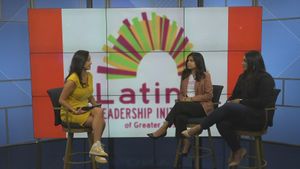NASA is currently weighing the possibility of extending the stay of two astronauts aboard the International Space Station (ISS) until early next year. This decision hinges on the status of Boeing's Starliner spacecraft, which has encountered significant delays leading to uncertain plans for their return.
Official sources have confirmed the astronauts, Butch Wilmore and Suni Williams, were launched to the ISS on July 3, 2024. NASA's space operations mission chief, Ken Bowersox, emphasized the importance of using their time on the station wisely as they gather more data.
NASA officials indicated they expect to announce the outcome of their deliberations by the end of this week or early next week. This pause allows them to assess the critical issues surrounding the Starliner, particularly the thrusters, which are pivotal for its descent from orbit.
Under the current scenario, NASA might opt to send the Brewster spacecraft back to Earth without any astronaut onboard. This maneuver has prompted discussions about how to manage crew rotations effectively, as it could necessitate moving current astronauts on the next SpaceX flight slated for late September.
More changes would be required if SpaceX eventually takes over their ferry flights, resulting in shifting some astronauts from their original assignments. Wilmore and Williams would occupy available seats during their transition to the SpaceX Dragon capsule once their mission concludes.
Currently, NASA is focused on retaining the current SpaceX crew until suitable replacements can arrive for the next mission to maintain continuity aboard the ISS. Despite their scheduled return this month, recent updates have extended their stay by several months due to Starliner's unresolved issues.
The standard duration for crewed missions on the ISS typically lasts about six months, though some missions have witnessed astronauts spend up to a year on-board. NASA's decision-making process reflects the need to maintain high operational standards and safety for its astronauts.
Meanwhile, astronauts currently aboard the ISS have started exploring various projects, ensuring their time is productive. They actively participate not only in scientific experiments but also create engaging content for audiences back on Earth.
This period has been particularly challenging due to the unpredictable timeline of their return. The continued uncertainties surrounding Boeing's Starliner highlight the technical hurdles still present as private aerospace companies take on more responsibilities typically managed by NASA.
Indeed, conducting space missions entails managing risks, especially when delays like these arise. The agency remains focused on updating the public about these developments as new details become available.
Despite the hurdles faced during this mission, it's critical to recognize NASA's longstanding commitment to space exploration. Stakeholders are awaiting word on how these adjustments will impact ESA and partners involved with future ISS crew flights.



